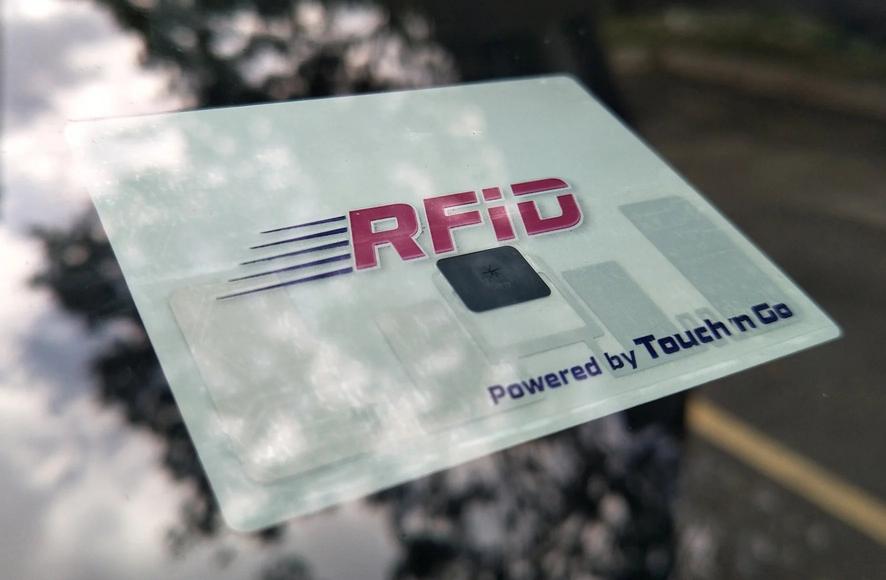
PLUS Malaysia (PLUS) recently announced that the main stretch of the North-South Expressway (NSE) from Juru, Penang to Skudai, Johor will support RFID (radio frequency identification) toll payments beginning from January 15, 2022.
This is part of the highway concessionaire’s plan to introduce RFID toll payments to all its highways by early 2022 and is in line with the works ministry’s plan to have an Intelligent Transport System (ITS). The widespread implementation of RFID is the stepping stone towards a single-lane free flow (SLFF) toll system, and eventually, a multi-lane free flow (MLFF) toll system.
The rollout of RFID will result in the gradual discontinuation of Touch ‘n Go card and SmartTAG toll collection, with the government aiming to end both by the end of 2023. As such, motorists will have to make the switch to RFID eventually, which has undoubtedly attracted many questions.
To try and address the potential concerns of motorists during this transition, PLUS recently held a media roundtable to provide a better insight into its RFID programme as well as further initiatives that will be implemented in the future.
How will RFID work on PLUS highways?
The RFID toll payment system isn’t new to our highways, as you’ve probably seen lanes dedicated to the system at toll plazas on highways such as the New Pantai Expressway (NPE) and Guthrie Corridor Expressway (GCE).
Those highways have an open toll system, which charges fixed toll rates based on the vehicle class, but the NSE has a closed toll system where motorists are charged based on the distance travelled between their check-in and exit points – RFID implementation on a closed toll system is new.
The mechanics of both toll systems are pretty straightforward. In an open toll system, when you drive through the dedicated RFID lane, a reader picks up the information on the vehicle’s RFID tag and the toll charges are deducted from your linked TnG eWallet.
As for a closed toll system, the reader will log your vehicle’s entry point and upon exit at another toll plaza, the toll charges based on the distance travelled will be deducted from your TnG eWallet. This is the same method if you use a TnG card or SmartTAG, but the difference is you don’t have to tap your TnG card on a reader or ensure your SmartTAG has enough battery power in it – the RFID tag doesn’t require an external power source to operate.
With the RFID system, PLUS says up to 1,200 transactions can be processed per hour, which is 20% more compared to SmartTAG. As for availability, on the Juru-Skudai stretch, 159 RFID lanes across 73 toll plazas will be ready and operational on January 15, 2022. These will add to the 20 existing RFID lanes that are currently active across nine toll plazas on other highways operated by PLUS.
Despite the rapid rollout (delayed due to the various MCOs), TnG and SmartTAG lanes will still continue to be available at toll plazas during the RFID transition period. PLUS has said it will work with TnG and other parties to promote the adoption of RFID through various marketing campaigns and promotions to achieve the targeted 60% adoption rate by end-2022.
I heard the RFID system works with something called ANPR. What is that?
While the RFID system is the primary method to validate entry and exit points to calculate toll charges, there are two other methods to deal with special scenarios. The first is an automated number plate recognition (ANPR) system, which uses a camera to snap a photo of incoming vehicles, uniquely identifying each one based on their number plate.
Such a system is already in use in some parking lots like at Sunway Pyramid, which has adopted a cashless payment system that determines the parking fee you’ll need to pay based on the logged entry and exit times.

PLUS says all its toll plaza lanes will be equipped with the ANPR system, be it those dedicated to RFID, TnG or SmartTAG as an alternative means to log a vehicle’s entry and exit points. It adds that to train the ANPR system to effectively identify number plates, several sample images are fed to the system’s deep learning “brain” to continuously improve its capabilities.
However, not all vehicles have number plates that are in good condition (i.e. damaged), clean and/or not of regulation standard (i.e. fancy plates), which may affect the ANPR system’s ability to identify number plates. Because of this, PLUS has a third fallback in the form of a dedicated validation centre where backend staff resolve any potential identification issues and ensure you are charged accordingly.
What happens if I don’t have enough funds in my TnG eWallet at the exit toll plaza?
In the event your TnG eWallet balance is insufficient at your exit toll plaza, you simply need to top up through the TnG eWallet app on your phone and you’ll be on your way. If you prefer not having to deal with such a situation, consider activating the auto-reload function that can automatically reload your TnG eWallet when it hits a certain threshold.
What happens if the RFID tag fails to read at the exit toll plaza?
Should there be a situation where an RFID tag can’t be read at a toll plaza because of an issue with the overhead reader, a power failure or network outage, each toll plaza will have customer service staff equipped with portable RFID readers to read your vehicle’s RFID tag manually and the system will determine the toll fee to be charged.
What happens if I enter using TnG or SmartTAG and exit using RFID, and vice versa?
In such a scenario, the photo of your vehicle taken by the ANPR system will be used to validate your entry and exit points, after which the system will determine your toll charges. This process is done seamlessly, but if there are still any issues that arise, the validation centre will be called upon to resolve them.
It should also be noted that if you were to enter the NSE using your TnG card or SmartTAG and exit using RFID, the system will not deduct from your TnG card’s balance. This is because when the ANPR system has determined the entry and exit points, and the toll charges have been deducted from the TnG eWallet, the transaction for that trip is deemed as completed, so using the TnG card at another entry point creates a new trip transaction.
Put simply, the exit point is where a lot of the work takes place to determine the toll charge, with RFID taking precedence in terms of validation, followed by your number plate and if there’s still an issue, the validation centre comes into play.
Will I still be able to earn PLUSMiles using RFID to pay toll?
Yes. You simply need to link your vehicle’s RFID tag to your PLUSMiles membership account like you would with your PLUSMiles or TnG card.
Are the plans to support PayDirect for TnG or SmartTAG lanes on PLUS highways?
PLUS is actively working with TnG to offer other payment methods like PayDirect, as well as support for credit cards to enable direct payments without the need to reload, although there’s no timeline mentioned on when they will be made available. For now, it’s just manual or automatic reloads for your TnG eWallet balance.
What about other motorists who tailgate/tiong/cucuk me to avoid paying toll?
Toll evasion is nothing new, even with the existing TnG and SmartTAG toll payment options, and PLUS has said in the past that it will take legal action against those caught doing so. With the ANPR system and other surveillance systems in place, toll evaders will likely not be able to escape punishment.